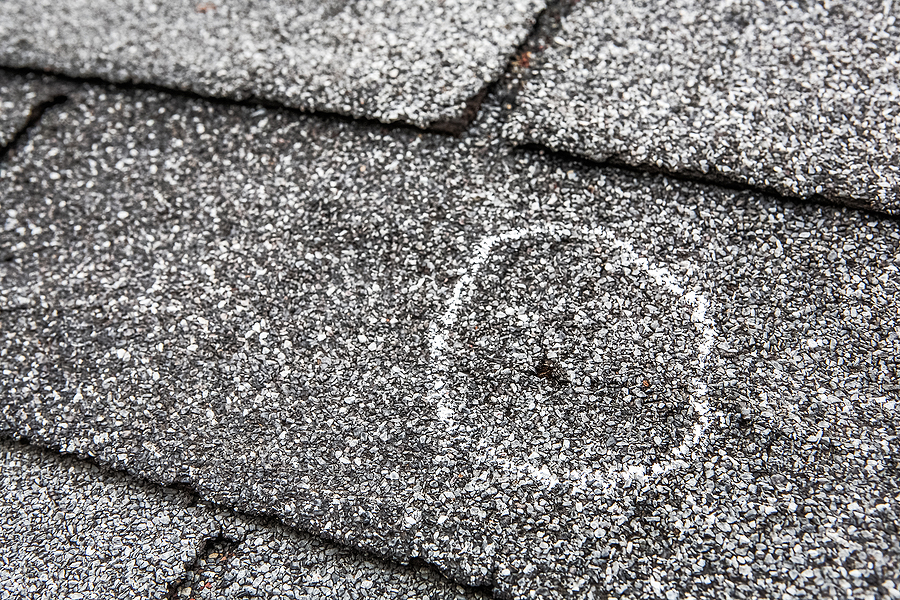Hailstorms are notorious for causing significant damage to roofs, siding, and gutters. While it might be tempting to wait for obvious signs of damage, acting quickly can help prevent long-term issues that could cost you more in roof repairs or even a full roof replacement. Here’s a comprehensive guide for homeowners on what to do after a hailstorm to protect their roofs from long-term damage.
1. Inspect for Immediate Damage

The first step after a hailstorm is to check for visible damage. Hail impacts can cause dents or cracks in roofing materials, especially in asphalt shingles, and may loosen or break shingles entirely. You might notice dents on your siding or gutters too. Signs of hail damage often include:
- Bruises or soft spots on your shingles
- Cracked or broken shingles
- Loose granules on asphalt shingles
- Dents in metal roofing or flashing
It’s crucial to identify hail damage early on before it leads to leaks or structural problems. If you’re unsure how to spot signs of hail damage, it’s always best to consult a professional roof inspector or roofing contractor to assess the situation thoroughly.
2. Document the Damage
Once you’ve identified hail damage, it’s essential to document it for future reference, especially if you plan on filing an insurance claim. Take detailed photos and make notes of the affected areas, including any dents, cracks, or dislodged shingles. Focus on parts of your home’s exterior such as the roof, siding, and gutters. Don’t forget to check other structures like your deck or fences for hail hits as well.
This documentation will be helpful when working with insurance companies or when you file an insurance claim for repairs or replacement due to hail damage.
3. Contact Your Insurance Company
Your next step is to reach out to your homeowner’s insurance provider to report the damage. Insurance companies will send out an adjuster to assess the extent of the damage to your roof and other affected areas. Make sure you have your documentation ready and be prepared to point out specific hail impacts, missing shingles, or other damage to your roof. Filing an insurance claim as soon as possible will ensure that the damage is covered before it leads to larger issues, such as water infiltration or mold growth.
4. Hire a Professional Roofing Contractor
Not all roof damage is easy to detect, and some hail hits may weaken your roof’s structure without being immediately visible. It’s essential to hire a professional roof inspector or roofing contractor to conduct a detailed inspection. They can assess whether your roof requires repairs or a full roof replacement. A professional will look for:
- Minor tears or cracks in your shingles
- Granule loss in asphalt shingles
- Damage to flashing or gutters
- Structural weaknesses that may develop into leaks
Roofing contractors experienced with hail damage will be able to guide you on the next steps, whether you need roof repairs or replacement, and can also assist you in dealing with insurance claims.
5. Understand Roofing Material Vulnerabilities

Different roofing materials react to hail damage in varying ways. Asphalt shingles, for example, may show dents, granule loss, or cracks, while metal roofs may sustain visible dents. It’s essential to know how your roof’s materials respond to hail so you can address the specific signs of damage.
If your roof is made of asphalt shingles, watch for signs such as granules collecting in your gutters or soft spots when you press on a shingle. This indicates significant damage to your roof’s protective layer, increasing the chances of leaks and long-term water damage. Understanding the vulnerabilities of your roofing materials will help you decide whether roof repairs or a roof replacement is necessary.
6. Prevent Future Damage
After addressing the immediate hail damage, it’s wise to take steps to minimize potential future damage. Here are some proactive measures you can take:
- Schedule regular roof inspections, especially after major storms or high winds.
- Ensure that your gutters are functioning properly to prevent water buildup.
- Trim tree branches that hang near your roof, as they can cause further damage during a storm.
- Consider upgrading your roof with more impact-resistant materials if you live in an area prone to frequent hailstorms.
7. Stay on Top of Insurance Claims
After your roofing contractor has completed the repairs or replacement, follow up with your insurance company to ensure that your claim is processed correctly. Be sure to keep copies of all invoices, inspection reports, and other documentation related to the hail damage and the subsequent repairs or replacement. This will protect you in case of any disputes with your insurer and ensure you receive the compensation you deserve.
After a hailstorm, acting quickly and effectively can save you from long-term roof damage and costly repairs. By inspecting your roof, documenting damage, filing an insurance claim, and hiring a professional roof inspector or roofing contractor, you can ensure that your roof remains in top condition for years to come. For expert help with roof repairs or roof replacement, be sure to contact a reputable contractor like Vision Exteriors to get the job done right.
